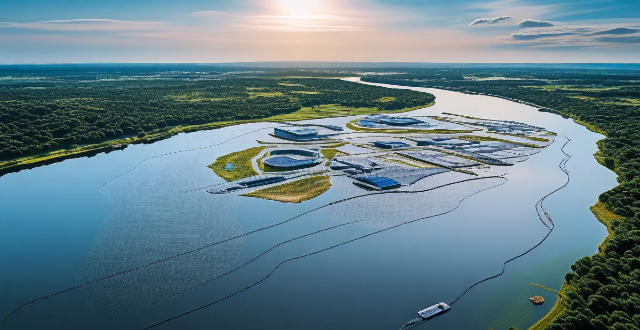Climate change affects water resources and availability through melting glaciers, changes in precipitation patterns, sea level rise, increased evaporation rates, and impacts on ecosystems. These impacts can lead to water scarcity, flooding, contamination of freshwater sources, and declines in biodiversity. To mitigate these effects, it is important to reduce greenhouse gas emissions and implement adaptation strategies such as improved water management and conservation measures.

How Climate Change Affects Water Resources and Availability
Climate change is a global phenomenon that has far-reaching impacts on various aspects of our environment, including water resources and availability. The following are some of the ways in which climate change affects water resources:
1. Melting Glaciers and Snowpack
The Earth's temperature has been increasing due to greenhouse gas emissions, leading to the melting of glaciers and snowpack at an alarming rate. This has significant consequences for water resources, as many regions rely on these sources for their freshwater supply. As these ice masses continue to shrink, they will eventually cease to exist, leaving communities without a reliable source of water.
2. Changes in Precipitation Patterns
Climate change is also causing changes in precipitation patterns, with some areas experiencing more frequent and intense rainfall, while others face prolonged droughts. This can lead to flooding or water scarcity, depending on the location. Flooding can damage infrastructure and make it difficult for people to access clean water, while droughts can lead to water shortages and crop failures.
3. Sea Level Rise
Rising sea levels caused by melting ice sheets and thermal expansion of ocean water pose a threat to coastal communities. As sea levels rise, saltwater can intrude into freshwater sources, making them unsuitable for drinking or agricultural purposes. Additionally, storm surges can contaminate water supplies with saltwater and other pollutants.
4. Increased Evaporation Rates
Warmer temperatures also lead to increased evaporation rates, which can reduce the amount of water available in lakes, rivers, and reservoirs. This can exacerbate existing water shortages and make it more difficult for people to meet their daily water needs.
5. Impacts on Ecosystems
Water resources are essential components of ecosystems, providing habitat for plants and animals. Changes in water availability can have cascading effects throughout ecosystems, leading to declines in biodiversity and alterations in food webs. This can also impact human communities that rely on these ecosystems for food, recreation, and other services.
In conclusion, climate change has significant implications for water resources and availability worldwide. To mitigate these impacts, it is crucial to reduce greenhouse gas emissions through sustainable practices and implement adaptation strategies such as improved water management and conservation measures.